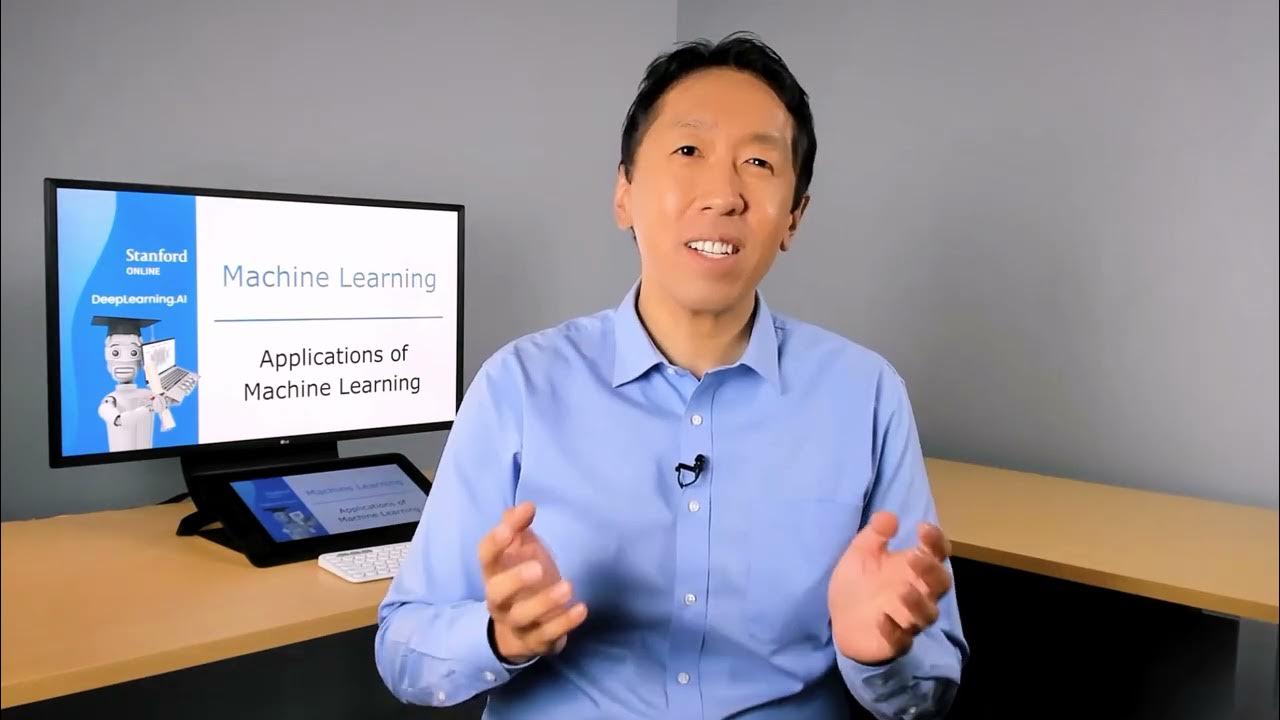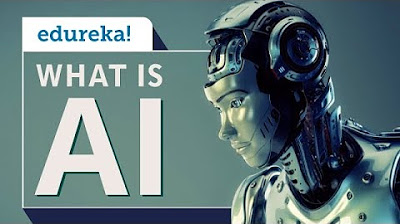Welcome (Deep Learning Specialization C1W1L01)
Summary
TLDRThis video script introduces the transformative impact of deep learning across various industries, from healthcare to self-driving cars. It invites viewers to a Coursera Specialization that teaches deep learning tools, enabling them to contribute to an AI-powered society. The Specialization covers neural network foundations, practical deep learning, project structuring, convolutional neural networks, and sequence models for natural language processing, aiming to enhance career prospects in the technology field.
Takeaways
- 🌟 Deep learning is revolutionizing various industries, including healthcare, education, agriculture, and transportation with applications like X-Ray image reading and self-driving cars.
- 📚 The speaker offers to guide learners through a Specialization course series on Coursera to master deep learning tools and confidently add them to their resumes.
- 🔮 The next decade presents an opportunity to build an AI-powered society, and the speaker encourages participants to play a significant role in this creation.
- ⚡ AI is likened to the 'new electricity,' having the potential to transform every major industry as electrification did a century ago.
- 💼 Deep learning is currently one of the most sought-after skills in the technology sector.
- 🎓 The Specialization consists of five courses, each lasting between two to four weeks, starting with the basics of neural networks and deep learning.
- 😺 The first course will teach attendees to build a neural network capable of recognizing cats, a common introductory project in the field of deep learning.
- 🛠️ The second course focuses on the practical aspects of deep learning, including performance optimization, hyperparameter tuning, and advanced algorithms.
- 📈 The third course covers structuring machine learning projects, including new best practices for handling data distribution and end-to-end deep learning.
- 🖼️ Course 4 delves into convolutional neural networks, which are widely used for image-related tasks.
- 🔠 The final course, Course 5, explores sequence models, essential for natural language processing, speech recognition, and other sequential data applications.
- 🚀 By completing the Specialization, learners will gain the skills to apply deep learning to build innovative solutions and potentially advance their careers.
Q & A
What impact has deep learning had on traditional internet businesses?
-Deep learning has transformed traditional internet businesses such as web search and advertising by enabling more advanced data analysis and personalized user experiences.
How is deep learning contributing to the healthcare sector?
-Deep learning is being used to improve healthcare by getting better at reading X-Ray images, which can assist in more accurate diagnoses.
What is a Specialization on Coursera, and how does it relate to deep learning?
-A Specialization on Coursera is a sequence of courses designed to provide in-depth knowledge in a specific field. In the context of the script, it refers to a series of deep learning courses that will enable learners to apply these skills effectively.
Why is deep learning considered one of the most sought-after skills in the technology world?
-Deep learning is in high demand because it drives significant advancements in various industries and enables the creation of innovative products and services, such as self-driving cars and precision agriculture.
What is the significance of being able to put 'deep learning' on one's resume?
-Having 'deep learning' on a resume signifies that the individual has the skills and knowledge to work with cutting-edge technology, which can be a strong asset in the job market.
How does the speaker describe the potential of AI in transforming society over the next decade?
-The speaker likens AI to the 'new electricity,' suggesting that it has the power to transform every major industry and create an amazing, AI-powered society.
What is the first course in the Specialization about, and what will learners be able to do by the end of it?
-The first course in the Specialization focuses on the foundations of neural networks and deep learning. By the end of the course, learners will be able to build a deep neural network and apply it to recognize images, such as cats.
What topics are covered in the second course of the Specialization?
-The second course covers practical aspects of deep learning, including hyperparameter tuning, regularization, diagnosing learning problems, and advanced optimization algorithms like Momentum, RMSprop, and Adam.
How has the strategy for building a machine learning system changed with the advent of deep learning, as mentioned in the third course?
-The third course discusses how the approach to machine learning has evolved, particularly in terms of data handling and model training. It covers new best practices for structuring machine learning projects in the era of deep learning.
What are Convolutional Neural Networks (CNNs), and what are they used for?
-Convolutional Neural Networks (CNNs) are a type of deep learning model that are particularly effective for processing images. They are covered in the fourth course of the Specialization.
What is the focus of the fifth course in the Specialization, and what types of problems can the learned models be applied to?
-The fifth course focuses on sequence models, including Recurrent Neural Networks (RNNs) and Long Short-Term Memory (LSTM) models. These models are applied to natural language processing and other sequence data problems, such as speech recognition and music generation.
Outlines

This section is available to paid users only. Please upgrade to access this part.
Upgrade NowMindmap

This section is available to paid users only. Please upgrade to access this part.
Upgrade NowKeywords

This section is available to paid users only. Please upgrade to access this part.
Upgrade NowHighlights

This section is available to paid users only. Please upgrade to access this part.
Upgrade NowTranscripts

This section is available to paid users only. Please upgrade to access this part.
Upgrade NowBrowse More Related Video

O que é 5G? | Indústria de A a Z - (Ep. #4)

AI in Everyday Life: How Artificial Intelligence Impacts You 🤖🌍

What Is Artificial Intelligence? | Artificial Intelligence (AI) In 10 Minutes | Edureka

How will Artificial Intelligence and Internet of Things change the world?

#2 Machine Learning Specialization [Course 1, Week 1, Lesson 1]

Artificial Intelligence | What is AI | Introduction to Artificial Intelligence | Edureka
5.0 / 5 (0 votes)